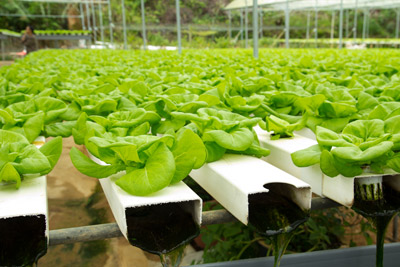
Why organic and why freshly grown? With corporations producing most of our food, these days profit comes before quality. Most fruit and vegetables grown rely heavily on chemical fertilizers and pesticides. Genetically Modified Organisms (GMO) are widely used in crops these days to improve yield and obtain certain qualities in the crops. It is a very hot topic these days with many arguing the negative effects on our health.
These giant multinational companies have the power to influence the outcomes of studies in the ways GMO can affect our health. So, regardless of whether we believe what we are told, it is much safer to grow your own fruit and vegetables at home. And with the prices of food at the supermarkets climbing, it is also a way to save on your weekly grocery bills.
Pesticides and chemical fertilizers are also an issue in food production with negative effects on our health. With food grown on a large scale, it is easy to control pests by applying chemical fertilizers. Companies are always finding ways to minimize costs and improve yield rather than considering the health of the consumer.
What are the Common Health Questions?
- Triggering an allergic reaction. A study carried out in 1996 found an allergenic Brazil nut gene was transferred to soybeans, the allergenicity was also transferred. They say this has been banned but we can never be 100% confident in announcements like this.
- Gene Crossover. A woman was reported to go into anaphylactic shock after eating tacos in the year 2000. They found a GMO corn crop grown for animal feed only cross-pollinated with crops intended for human food.
- The use of antibiotic resistant genes as selective markers leading to antibiotic resistant strains, which can be resistant to currently used antibiotics.
- There is overwhelming evidence of the health risks to humans from the use of pesticides in growing crops.
This is a quote from an article in US National Library of MedicineNational Institutes of Health
“There is now overwhelming evidence that some of these chemicals do pose a potential risk to humans and other life forms and unwanted side effects to the environment (Forget, 1993; Igbedioh, 1991; Jeyaratnam, 1981). No segment of the population is completely protected against exposure to pesticides and the potentially serious health effects, though a disproportionate burden, is shouldered by the people of developing countries and by high-risk groups in each country (WHO, 1990). The worldwide deaths and chronic diseases due to pesticide poisoning number about 1 million per year (Environews Forum, 1999).”
What is the Best Way to Address These Common Health Questions?
Unfortunately, there is very little we can do about the way corporation grow their crops. We would like to think our governments would regulate they food supply industries. But they bow to the lobbyist who pushes the large organization’s agenda.
So the best way is to grow your own organic food at home. Growing at home addresses these common health questions about the quality of food you are eating. By eliminating the producers and the suppliers who pollute our food.
Methods of Growing Organic Food at Home
There are 3 main methods of growing organic food in your backyard. These are:
- Growing the conventional method in the soil.
This is the easiest way to start your garden but it can be very high maintenance compared to the other methods. You also need good soil and the water consumption is higher than the other methods. Also, pests associated with the soil are eliminated in the other methods.

Hydroponics Gardening (Growing without Soil).
Hydroponics eliminate soil in growing your plants. For this reason, your maintenance time is cut dramatically. This also eliminates the need for quality soil so you can grow anywhere you have a good water supply.
Hydroponics is also very scalable. You can grow in limited space with verticle systems and right up to large commercial farms.
Aquaponics Gardening
Aquaponics combines Hydroponics with Aquaculture (growing fish). In this method, you are creating a self-sustaining ecosystem. While an Aquaponics System is a bit more difficult to setup, it is virtually maintenance free.
Aquaponics uses approximately 10% of the water used by a conventional garden. The plants feed on the fertilizer produced by the fish. The grow bed cleans and conditions the water for the fish to grow quickly and healthy.
A home Aquaponics garden is also very scalable. You can have a small herb garden in your kitchen or a balcony garden. A family of 4 can be fed in an area of one square meter.
Which is the best method?
The answer is very subjective. It depends very much on your location and circumstances. As mentioned earlier the conventional garden is the most common. For this reason, there are plenty or materials and instructions available. Unlike the other methods, it takes very little technical knowledge so just about anyone can build their own garden.
As mentioned earlier the conventional garden is the most common. For this reason, there are plenty or materials and instructions available. Unlike the other methods, it takes very little technical knowledge so just about anyone can build their own garden. It is possible to grow organic food in a conventional garden.
Hydroponics takes some technical knowledge to get the flow rates right. This is necessary to deliver the right amount of nutrients to the plants. Too fast and the plants will not have time to extract the nutrients from the water. When you have setup your hydroponics system the maintenance is relatively simple. It is just a matter or monitoring the nutrient levels in the water and adding more when necessary.
Aquaponics is the most technical system to setup but it requires the least maintenance when it is running. it is just a matter or testing the pH levels of the water and adjusting if necessary. The plant feed on the fertilizer produced by the fish so there is no need to add fertilizers. The only other maintenance is feeding the fish.
Pants in an Aquaponics garden grow approximately 3 times faster than a conventional garden. They also grow far bigger and you have the added benefit of growing fish. And with the system using less than 10% of the water used in other systems, it is suitable for dry climates.
Daily Health Tips with These Common Health Questions
This is a very basic tip, eat healthy food daily. If you are eating the foods supplied by the corporate farmers there is no guarantee of the quality. Take control of your health every day by growing your own organic food. You have the benefit of being able to pick it fresh as you are cooking. You will also avoid the high price the supermarkets are charging these days.
This guest post was written by Kevin Pola
When I started to develop digestion disorders I visited the doctors and series of test. They were not able to tell me exactly what was causing the problems so I started research alternate ways. I learned about the effects of the western diet, of all the rubbish we are pumping into our bodies. Changing my diet quickly started to improve my health so looked further. I found there was a very limited supply of naturally grown organic food. There are even questions about the quality of the so-called organic food sold in the supermarkets.
So this is where I started looking at the best ways to grow my own Totally Organic food at home. I found Aquaponics by far the best method to grow my own food.
If you like the idea of starting your own Aquaponics Garden in your backyard you can learn more by visiting my blog Aquaponics With Kev



